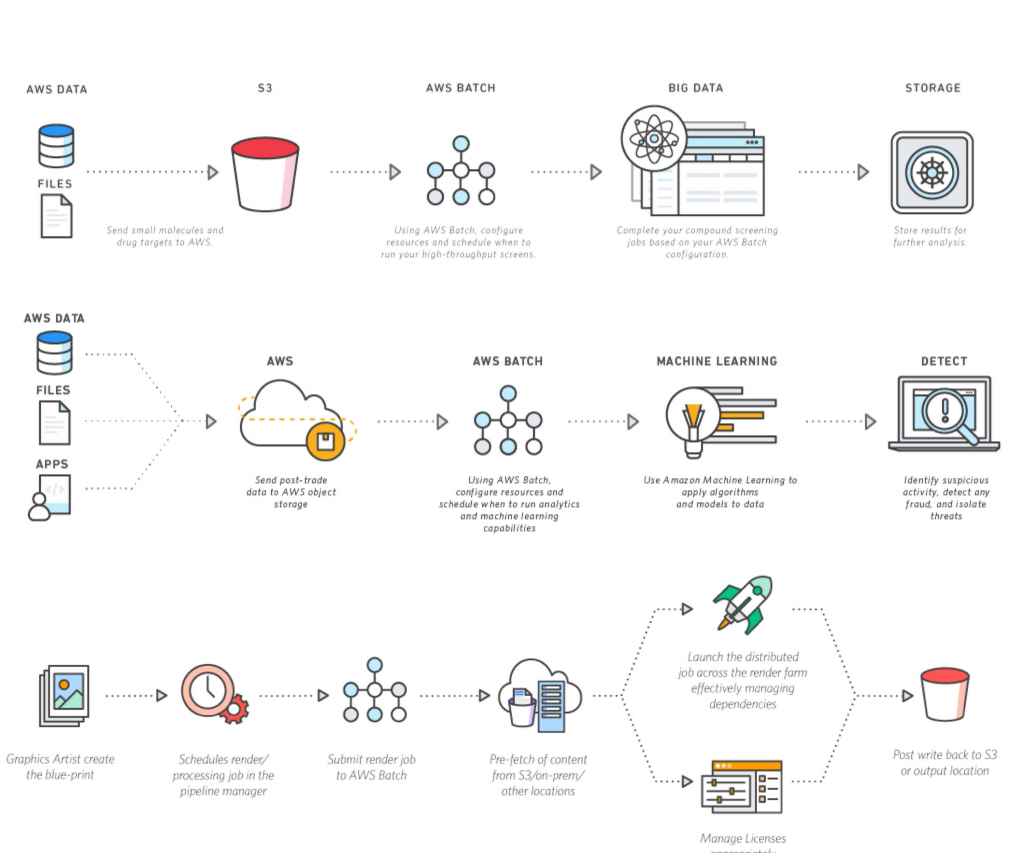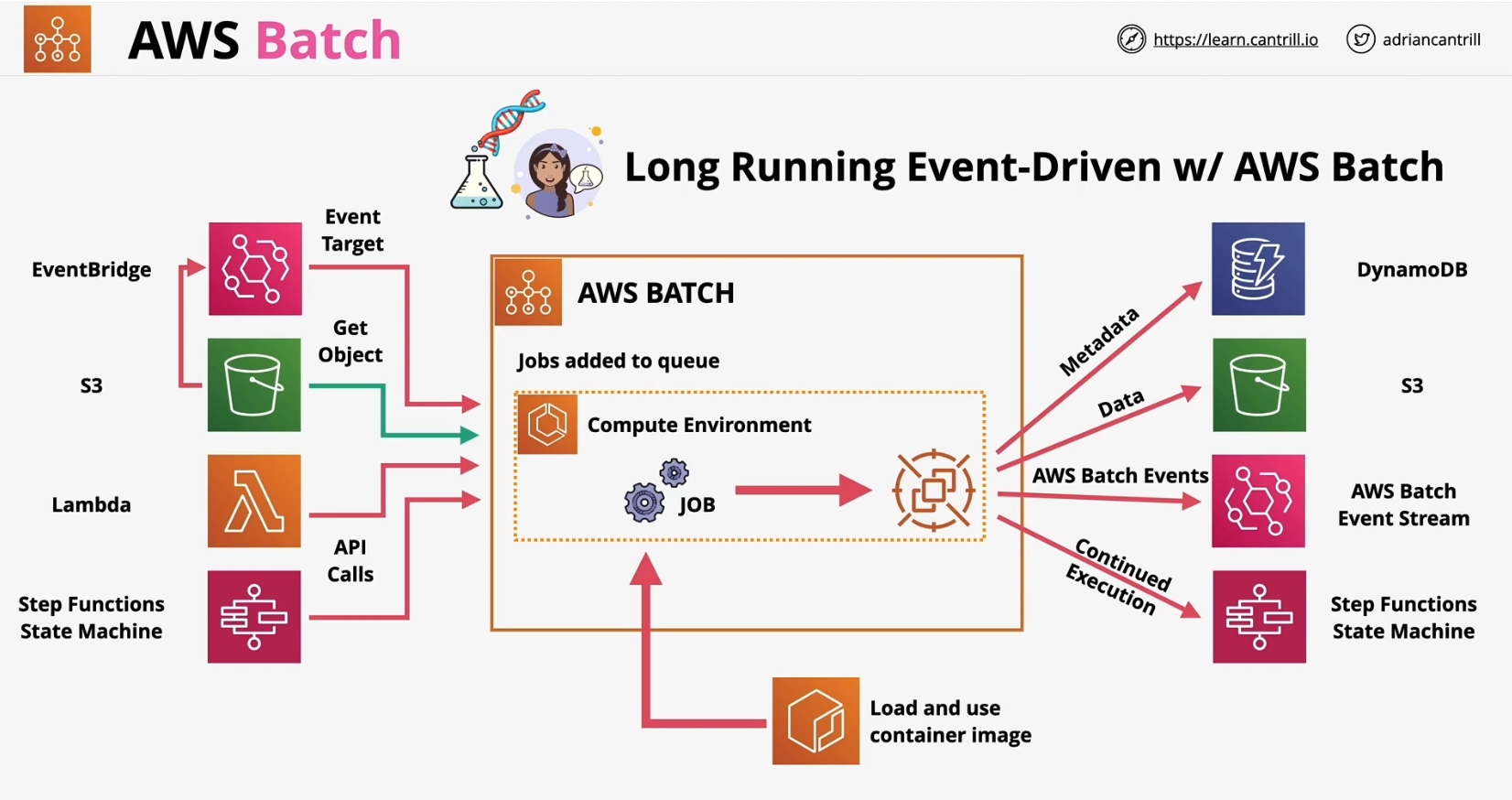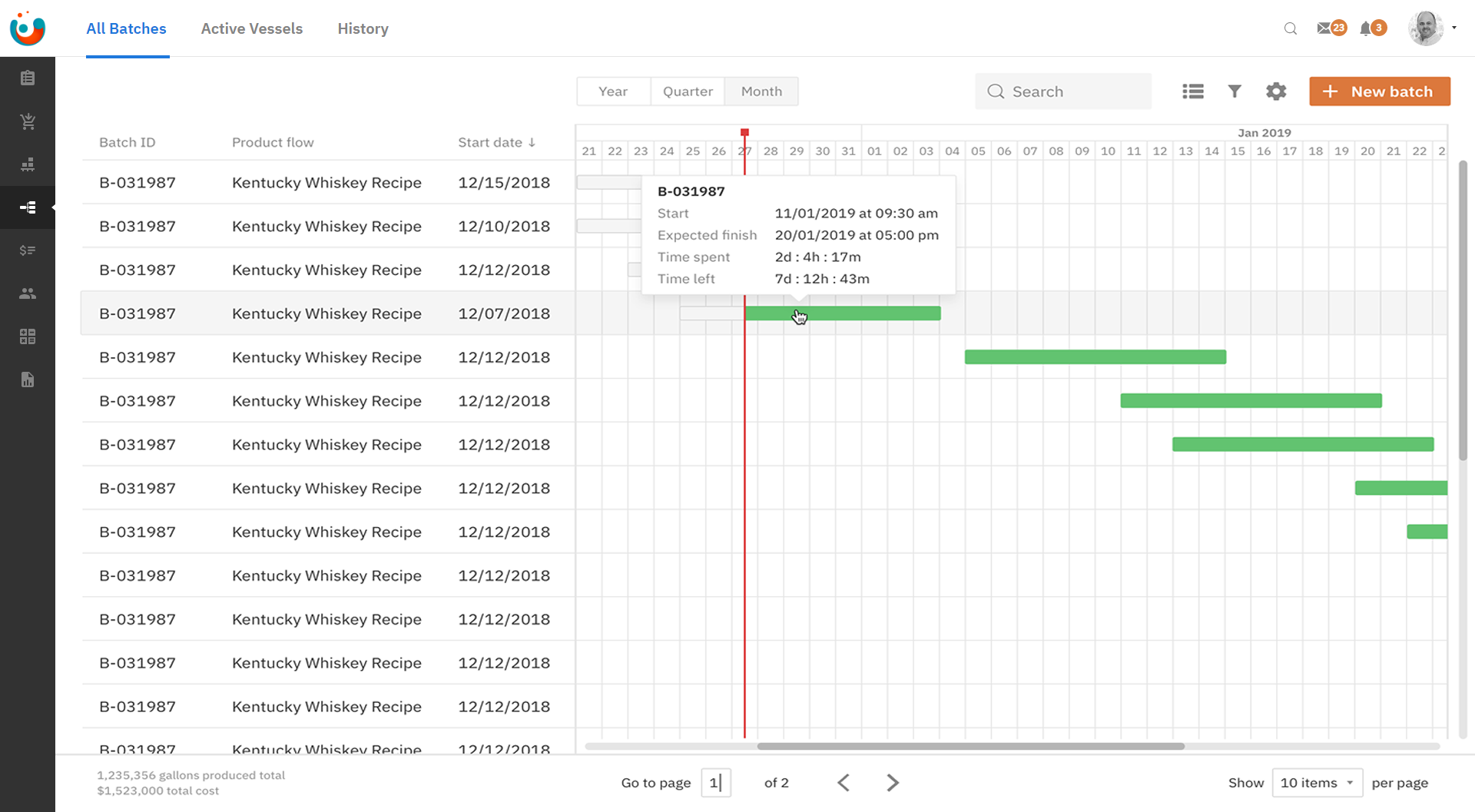Collecting information from far-off gadgets, like sensors out in the wild or machines on a factory floor, is a very common thing these days. These little devices send back loads of data, sometimes in a constant flow, other times in bursts. Figuring out what to do with all that incoming information, especially when it piles up, is a big piece of the puzzle for many folks working with these systems. It's about taking that raw stream of numbers and turning it into something useful, something that can help make decisions or show you what's truly happening.
When you have a whole bunch of data that has built up over a period, rather than processing it as it arrives one bit at a time, it often makes more sense to handle it all together. This idea, called batch processing, is a rather helpful approach for situations where you don't need instant answers, but you do need to work through a large collection of records efficiently. It’s like gathering up all your mail for the week and opening it all at once, instead of opening each piece the moment it arrives; sometimes, that just makes more sense for what you need to get done.
The cloud, specifically a place like Amazon Web Services, offers a lot of helpful tools for this kind of work. It provides a flexible space where you can set up systems to collect, store, and then process those big piles of IoT data. We're going to talk a bit about how you might put together a simple setup for a remote IoT batch job example in AWS, showing you some of the basic building blocks and how they fit together to handle information from those far-away devices.
Table of Contents
- What Are Remote IoT Batch Jobs?
- Why Use Batch Processing for Remote IoT Data?
- How Do We Get Started with a Remote IoT Batch Job Example in AWS?
- What Does a Simple Remote IoT Batch Job Example in AWS Look Like?
What Are Remote IoT Batch Jobs?
Think about a remote IoT batch job as a way to handle a collection of tasks or a large amount of information from devices that are not right next to you. It's a method for processing data in chunks, rather than as a continuous flow. Imagine you have many temperature sensors spread across a large farm, and each one sends its readings every hour. Instead of looking at each reading the moment it comes in, you might want to gather all the readings from all the sensors for an entire day, and then, perhaps overnight, run a program that looks at all that information together. This program might figure out average temperatures, spot any big changes, or see if any sensor stopped working. So, it's really about taking a lot of pieces of information that have been saved up and then doing something with all of them at once. This approach tends to be quite efficient for many situations where immediate responses are not the main concern, but getting a full picture from a lot of data is.
The Core Idea Behind Remote IoT Batch Job Example in AWS
The basic concept for a remote IoT batch job example in AWS revolves around a few simple steps. First, your devices out in the field need a way to send their information to the cloud. This data usually arrives at a central spot, a kind of collection point. Once the data is gathered, it needs a place to sit and wait until it's time for processing. This storage location is often a very big digital container that can hold vast amounts of information without much fuss. Then, when the moment is right, a separate process or program wakes up, goes to that storage place, picks up all the waiting data, and starts working on it. This work could involve cleaning the data, making calculations, or getting it ready for someone to look at. After the work is done, the results might be put into another storage area or sent to a different system for further use. This whole flow, from device to collection, to storage, to processing, and finally to results, is what makes up the heart of a remote IoT batch job. It's a bit like sorting a big pile of laundry; you gather it all, put it in the machine, wash it all at once, and then hang it up to dry, rather than washing each sock as it gets dirty.
Why Use Batch Processing for Remote IoT Data?
You might wonder why someone would choose to handle data in batches instead of dealing with it as it arrives, piece by piece. Well, there are several good reasons for this, especially when we talk about information coming from devices that are far away. For one thing, processing things in big groups can be much more cost-effective. Imagine you have a machine that needs to warm up every time it processes a single item; if you have a thousand items, warming it up a thousand times would be very expensive and take a lot of time. But if you can warm it up once and then process all thousand items, that's a much better deal. Similarly, with computer systems, starting up a process for every single tiny bit of data can use up a lot of computing power and money. Grouping things together means the system only needs to get ready once for a big task. This approach also helps when you have limited network connections or when devices only send data at certain times, like once a day, which is something to think about.
Benefits for Your Remote IoT Batch Job Example in AWS
When you set up a remote IoT batch job example in AWS, you gain some really helpful advantages. One major plus is handling big amounts of data. IoT devices can generate truly massive quantities of information, and trying to deal with each tiny piece individually can overwhelm systems. Batch processing lets you collect these vast amounts and process them in a controlled, scheduled way. It also helps with making sure your system can grow easily. As you add more devices or as existing devices send more information, your batch system can simply handle larger batches without needing a complete overhaul. This means it can adapt to your needs as they change, which is very useful. Another good point is that it can be more reliable. If a small piece of data gets lost or an immediate processing step fails, it might not be a huge deal because the system is designed to work with collections of data. You can often retry the whole batch or parts of it without much trouble, ensuring that all your information eventually gets processed correctly. This method also lets you use your computing resources more wisely, which, you know, can save a good deal of money.
How Do We Get Started with a Remote IoT Batch Job Example in AWS?
Getting a remote IoT batch job example in AWS up and running involves picking out a few key services that work well together. It’s a bit like choosing the right tools from a big toolbox for a specific building project. The first step, really, is to have a way for your devices to send their information to AWS. This usually means using something like AWS IoT Core, which is a service specifically made for connecting devices and taking in their data. It's a kind of front door for all your IoT gadgets. Once the data comes in, it needs a place to be stored temporarily. For this, a very popular choice is Amazon S3, which is like a giant, super-reliable digital storage locker. It can hold any kind of file, big or small, and it's very good at keeping things safe until you need them. Then, for the actual work of processing the data, you might use something like AWS Lambda, which lets you run small bits of code without having to manage servers, or AWS Batch, which is made for running big computing jobs. Scheduling when these jobs run often involves AWS EventBridge or AWS Step Functions, which are like automatic timers or workflow managers. So, you see, it's about connecting these different parts to create a smooth flow for your information.
Key AWS Pieces for a Remote IoT Batch Job Example
Let's look a little closer at the important AWS pieces you might use for a remote IoT batch job example. First, there's AWS IoT Core. This service is really the starting point; it's what lets your far-off devices securely send their information to the cloud. It can handle a huge number of devices and a massive amount of incoming data, so it's a solid choice for gathering everything. Once IoT Core gets the data, it can then pass it along to other services. Often, the next stop is Amazon S3. S3 is where the raw data from your devices will sit and wait. It’s incredibly durable and scalable, meaning it can hold almost any amount of data for as long as you need it to, and it's very good for saving those large collections of sensor readings or event logs. For the actual work of processing these stored files, you might use AWS Lambda. Lambda functions are small pieces of code that run only when they are needed, which is very efficient. You could have a Lambda function that gets triggered on a schedule, perhaps once a day, to pick up all the new files from S3 and start working on them. For more complex or compute-heavy tasks, AWS Batch could be a better fit. It helps you run many computing jobs that need a lot of power, without you having to set up and manage the actual servers. Finally, to make sure these processing jobs happen at the right time, you might use AWS EventBridge. This service acts like a scheduler, allowing you to set up rules that say, "Every day at midnight, start this Lambda function" or "When a new file arrives in S3, kick off this process." It's quite a neat way to automate your data handling.
What Does a Simple Remote IoT Batch Job Example in AWS Look Like?
A very straightforward remote IoT batch job example in AWS might start with your IoT devices sending their data to AWS IoT Core. Let's say these are small bits of information, like temperature readings or sensor states. IoT Core, which is pretty good at taking in messages from many devices at once, then has a rule set up. This rule says, "Take every message that comes in and put it into a specific folder in an Amazon S3 bucket." An S3 bucket is just a digital storage container, a place where you can keep files. So, all day long, or all week, these little data messages pile up as files in that S3 folder. Then, perhaps once a day, at a set time like 3 AM, an AWS EventBridge rule kicks in. This rule acts like an alarm clock, and it triggers an AWS Lambda function. This Lambda function is a small program that you wrote, and its job is to go to that S3 folder, pick up all the new data files that have gathered, and then process them. It might read each file, pull out the important numbers, do some calculations, like finding an average, and then save the results to another place, maybe a different S3 folder or a database. This way, you're not constantly running a program; you're just running it when there's a big enough pile of data to make it worth the effort. It's a rather efficient way to handle things, you know.
Putting Together a Remote IoT Batch Job Example in AWS
To put together a remote IoT batch job example in AWS, you would typically start by making sure your devices are set up to talk to AWS IoT Core. This involves giving them the right security credentials so they can send their messages safely. Once that's ready, you would set up an IoT Core rule. This rule is like a filter and a router; it looks at the incoming messages and decides where they should go. For our batch job, the rule would send these messages, perhaps formatted as small text files or JSON documents, directly to an Amazon S3 bucket. You'd likely want to organize these files in S3 by date or by device ID, which makes it easier to find them later. Next, you would create an AWS Lambda function. This function would contain the actual code that processes your data. It could be written in Python, Node.js, or another language. This code would know how to read the files from S3, perform the necessary calculations or data cleaning, and then write the processed results. The final piece is setting up an AWS EventBridge rule. This rule would be configured to run on a schedule, for example, every 24 hours, and its job would be to trigger your Lambda function. When the EventBridge rule fires, the Lambda function wakes up, fetches the new data from S3, does its work, and then goes back to sleep until the next scheduled run. This setup creates a rather neat, automated pipeline for handling your IoT data in batches, making good use of the cloud's ability to scale and run things on demand.



Detail Author:
- Name : Allie McGlynn
- Username : hagenes.kianna
- Email : witting.freida@hotmail.com
- Birthdate : 1980-05-01
- Address : 162 Tiara Trail Suite 197 South Tamaraton, MS 90746
- Phone : 731.463.3970
- Company : Kautzer Inc
- Job : Central Office and PBX Installers
- Bio : Blanditiis expedita quibusdam ad ullam nam iusto. Sed ab qui amet. Et laboriosam aut dolorum et magnam.
Socials
instagram:
- url : https://instagram.com/raphael6262
- username : raphael6262
- bio : Ea at ut est eum tenetur. Nesciunt ducimus in tempora voluptatem.
- followers : 3430
- following : 27
twitter:
- url : https://twitter.com/raphael_bayer
- username : raphael_bayer
- bio : Doloremque voluptas laudantium qui quia aut. Itaque et nam quaerat vel rem porro. Eum voluptas ipsam dicta quasi dolores. Voluptatum veritatis commodi sit.
- followers : 5929
- following : 754

